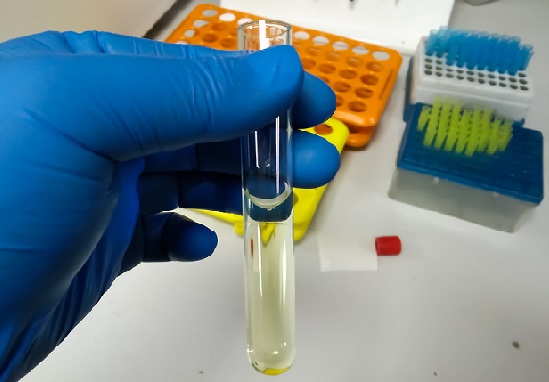Spinal Fluid Test Detects Lewy Body Disease Before Symptoms Appear
Posted on 15 Aug 2023
Lewy body disease, the second most prevalent neurodegenerative condition after Alzheimer's disease, encompasses both Parkinson's disease and Lewy body dementia. Distinguishing between the two subtypes depends on whether movement difficulties or cognitive impairments are more dominant. The cause of this debilitating disease is the misfolding of the alpha-synuclein protein in the brain, leading to the formation of disruptive Lewy bodies. These abnormal accumulations of protein damage nerve cells, giving rise to a range of symptoms. Up until very recently, confirming the presence of Lewy bodies in a patient with movement difficulties or cognitive impairments was a challenge, often requiring post-mortem analysis. But now, a spinal fluid test makes it possible to see if a patient has the misfolded protein.
Utilizing the spinal fluid test, a research group from Lund University (Lund, Sweden) has unlocked the ability to identify the misfolded alpha-synuclein protein even before noticeable symptoms manifest. Their extensive study, involving over 1,100 participants initially exhibiting no cognitive or motor impairments, yielded remarkable insights. Nearly 10% of the subjects exhibited Lewy bodies in their brains as indicated by the spinal fluid test, highlighting its potential to detect Lewy body disease even before the first symptoms appear.

In an interesting finding, the study revealed a distinct link between a diminished sense of smell and Lewy body disease, even before the presentation of other evident symptoms. Moreover, this association was found to become stronger as the disease advances. Such a clear correlation suggests the feasibility of conducting smell tests on individuals aged 60 and above, followed by spinal fluid testing for early Lewy body disease detection. However, due to various non-related causes of loss of smell, the spinal fluid test will play a more significant role in ensuring accurate diagnosis.
The research group also studied more than 800 individuals grappling with cognitive difficulties and found that around 25% of the participants exhibited results indicative of Lewy body disease through testing. Strikingly, approximately half of those with Lewy body disease also displayed protein accumulations associated with Alzheimer's disease, namely amyloid, and tau. Notably, when both Lewy bodies and the Alzheimer's-related proteins coexisted, the disease exhibited faster progression. This indicates interaction between brain changes, which is of significant clinical importance for predicting a patient's prognosis. The research team aims to develop a blood test for Lewy body disease, similar to the approaches employed for Alzheimer's disease. The difficulty in detecting Lewy body changes due to the lower concentration of brain-originating proteins in blood compared to spinal fluid still exists, although the potential for non-invasive early diagnosis brings hope for improved management of this complex disorder.
“I believe that this test for Lewy body disease will start being used relatively soon to improve the diagnostic and prognostic work-up in clinics that take care of individuals with movement disorders and cognitive symptoms,” said Oskar Hansson, Professor of Neurology at Lund University.
Related Links:
Lund University














